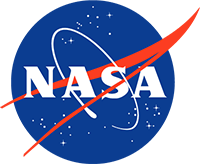Science Data Processing Branch/Code 587
Technologies and Products
Technical Expertise
Through previous projects, or under internal R&D, HQ or other funding, Code 587 has developed expertise and products in technology areas such as the following:
- Flight and Ground Computing
- Real-Time Data Processing
- High Performance/Reconfigurable Onboard Processing
- Radiation tolerant by software
- Plug-and-play software data systems (CFS)
- Mobile apps
- Visualization, modeling & simulation
- ISS payloads
- Embedded design
- Hardware acceleration
Current Technologies & Products
- Adaptive Sensor Fleet (ASF)
- Cross-Platform Solution for Performing Heterogeneous Fleet Control and Monitoring to Accomplish High-Level Science Goals.
- Application of Machine Learning to Planetary Spectroscopy
- This IRAD used Machine Learning (ML), specifically Autoencoders, to improve spectrometer retrievals by minimizing noise-like instrument bias effects. A 1-dimensional Convolutional Autoencoder was developed and shown to successfully reduce noise added to a Lorentzian spectral line shape, which was used as a spectrometer data test analog. This ML model is reasonably small in size and could be a candidate for future on-board spacecraft use.
- DSM Agent Framework
- The DSM Agent Framework is an event-driven software architecture designed to handle the needs of diverse spacecraft constellations, including: communications delays, emerging science opportunities, and rapid resolution of any detected faults, as well as quick coordination among many spacecraft in a constellation. Important design features of the DSM Agent Framework are: configuration flexibility, asynchronous messaging, and incorporation of modern AI techniques including: machine learning, reinforcement learning, and modern planning algorithm.
- Educational NASA Computational and Scientific Studies (enCOMPASS)
- Bridge the gap between computational objectives and challenges of NASA scientific research and missions and academia latest advances in Computational Sciences,
- Gigabit Per Second Processing for the AdEPT Telescope
- Support the on-board, real time, memory intensive processing of the Gb/s data stream of the Advanced Energetic Pair Telescope (AdEPT) instrument.
- Integrated Lunar Information Architecture for Decision Support (ILIADS)
- Provide users with capability to locate, access, analyze, and visualize mapped lunar data products.
- Instrument Remote Component (IRC)
- A software architecture designed for rapid application development.
- Current mission support is provided to MISSE-7/8, STP-H4/H5, Sophia, and ground based observatories.
- Integrated Space Weather Analysis (iSWA)
- iSWA is a flexible, Web-based dissemination system for NASA-relevant space weather information combining forecasts based on advanced space weather models with concurrent space environment information.
- LabNotes
- To create an iPod/iPad application to operate the mini-LHR that measures column CO2.
- Lunar Navigation Determination System (LaNDS)
- Robotic & human explorers will need to precisely determine their location and heading while conducting short duration exploration sorties and long distance / long duration lunar surface traverses.
- Mixed Reality Exploration Toolkit (MRET)
- Cutting Edge cutting edge inter-center collaborative toolkit to use Augmented Reality (AR) & Virtual Reality (VR) to enhance NASA science and engineering capabilities.
- On-board Artificial Intelligence Research (OnAIR)
- The On-board Artificial Intelligence Research (OnAIR) Platform is a software framework that enables researchers to experiment with artificial intelligence algorithms in a simulated flight software environment. OnAIR integrates with NASA's open source core Flight System (cFS): OnAIR is launched as a cFS application and is able to send and recieve software bus messages. The OnAIR platform supports Python, which allows access to leading Artificial Intelligence research tools and libraries. The OnAIR Platform is intended to be used by Artificial Intelligence researchers that are exploring applying Artificial Intelligence research to the flight software domain in a simulated environment. For example, a researcher may use the OnAIR Platform to develop a proof of concept demonstrating that a specialized technique can diagnose satellite faults in a simulated environment. OnAIR does not provide real satellite telemetry, algorithms for spacecraft control, or command and telemetry processing. The interface with and control of the simulated spacecraft is handled by NASA's cFS.
- Research in Artificial Intelligence for Spacecraft Resilience (RAISR)
- Software to allow spacecraft to rapidly diagnose real-time faults in spacecraft and spaceflight systems.
- Space Weather DONKI
- Chronicle of the daily interpretations of space weather observations, analysis, models, forecasts, and alerts provided by Space Weather Research Center.
- SpaceCube [Home page]
- A family of reconfigurable hybrid on-board science data processors.
- SpaceCube - On-Board Hyperspectral Data Processing
- Hyper-spectral (H/S) instruments generate large amounts of raw data that is typically stored on-board and then sent to the ground, where it is processed into images and related products.
- SpaceCube 2.0 - On-Board Processing
- Develop advanced on-board processing to meet the requirements of the Decadal Survey missions including advanced instruments.
- SpaceCube - On-Board SAR Data Processing
- Synthetic Aperture Radar (SAR) instruments generate a large amount of raw data that is typically stored on-board and then sent to the ground.
- SpaceCube - Radiation Mitigation by Software
- Design and implement a software architecture and set of software mitigation techniques that can enable rad-tolerant commercial processors to function reliably in a space environment.
- TechCube, High-Performance CubeSat
- Design TechCube to be a high-performance 3U CubeSat that minimizes "spacecraft bus" resource requirements and maximizes the volume, weight and power resources available to "science payloads".
- NASA Visualization Explorer App
- Provide a visually-appealing, user-friendly, touch-based app for tables and smart phones that allows users to view and explore the scientific visualizations.

